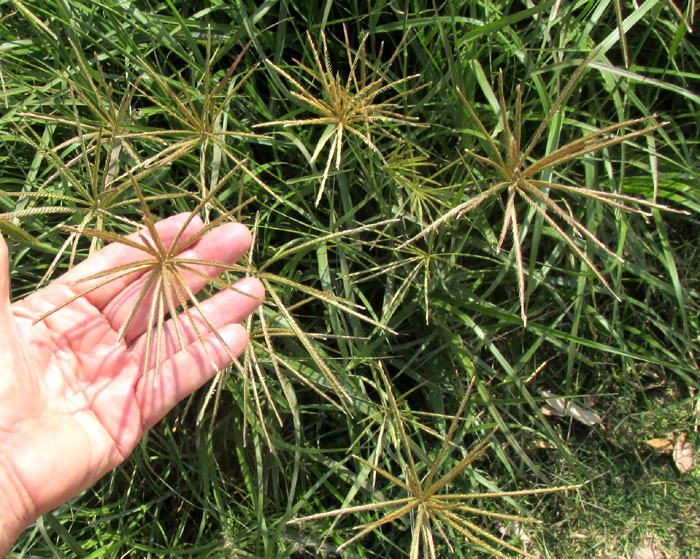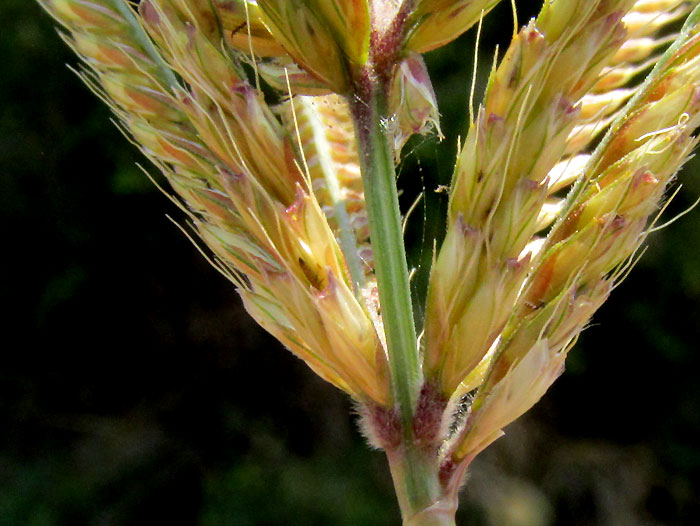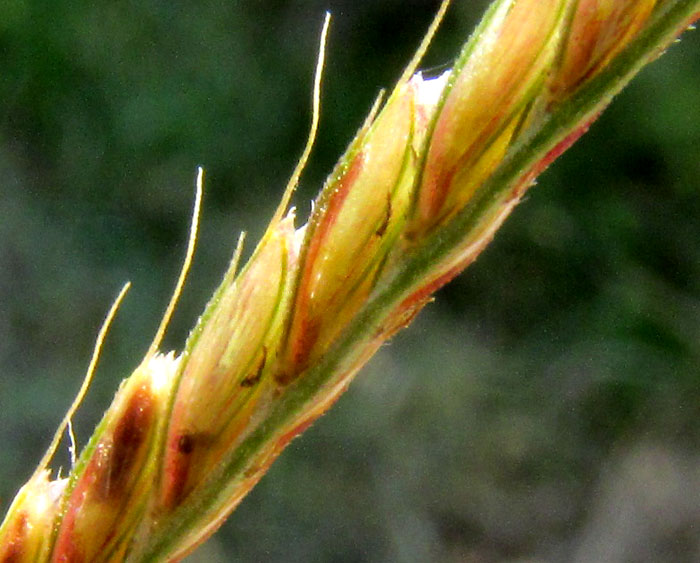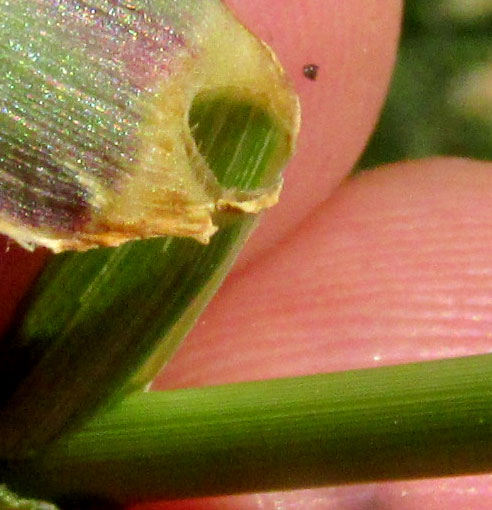Excerpts from Jim Conrad's
Naturalist Newsletter
entry dated May 22, 2022, issued from near Tequisquiapan, elevation about 1,900m (6200 ft), N20.565°, W99.890°, Querétaro state, MÉXICO
RHODESGRASS

Along roadsides sometimes in this area you find solid stretches -- maybe 5m (5yd) or so -- of just one kind of meter-tall (1yd) grass, the one shown above. It can be an impressive presence, and it's clearly a species reproducing by stolons. Possibly these isolated dense populations consist of just clones from one parent plant. The grass's assemblages of flowers, the inflorescences, are similar to those of the lawn weed Bermuda Grass, but with more divisions, as shown below:

A close-up of the inflorescence's lower part reveals several fieldmarks for identification:

In some species with several spikelike branches atop a tall stem, the culm, all the branches arise from the culm's very tip. Above, you can see that our grass's branches arise from more than one point. Noticing the branch at the image's far right, it's seen that the spikelets, instead of arising spirally from around the branch's stem, or rachis, all line up on one side of it. If you understand about glumes, lemmas and florets, as explained on our Grass Flowers page, looking closely at the lowest spikelet on the left side of the inflorescence, you can see that each spikelet contains at least two florets, and that the lemmas of both the first and second florets bear needle-like awns at their tips. Here's a side view of some spikelets:

Often in grass identification it's important to know what the grassblade's ligule looks like, the ligule being a thin outgrowth at the junction of the leaf and leafstalk. Sometimes ligules are in the form of little fences of hairs, or paper, or of thick, low collars, or often there's no ligule at all.

This one's ligules are very modest, consisting of a low, membranous collar sparsely bearing cilia-type hairs.
All these details and others lead us to Rhodesgrass, CHLORIS GAYANA, a native of Africa but now invasive in tropical and subtropical regions worldwide. In tropical and subtropical ranching areas it's one of the most widely sown grasses, and even cultivars of the species have been developed. It's sown in pastures to be grazed, or in fields to be cut for hay. It's also useful as a cover crop and to rehabilitate ruined soils. It's considered a tough, drought-resistant grass able to endure a wide range of environmental conditions.
However, being so vigorously stoloniferous, the pure stands it forms smothers out native species. In numerous countries it's regarded as an undesirable weed in certain situations.